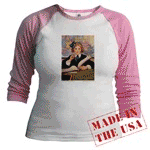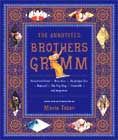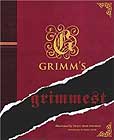| Introduction | Annotated Tales | eBooks | Bookstore | Illustration Gallery | Discussion Board | Blog |
 |
|
|
Knoist and His Three Sons BETWEEN Werrel and Soist there lived a man whose name was Knoist, and he had three sons. One was blind, the other lame, and the third stark-naked. Once on a time they went into a field, and there they saw a hare. The blind one shot it, the lame one caught it, the naked one put it in his pocket. Then they came to a mighty big lake, on which there were three boats, one sailed, one sank, the third had no bottom to it. They all three got into the one with no bottom to it. Then they came to a mighty big forest in which there was a mighty big tree; in the tree was a mighty big chapel in the chapel was a sexton made of beech-wood and a box-wood parson, who dealt out holy-water with cudgels. "How truly happy is that one NOTES From Sauerland, [1] and in that dialect. It should be sung, and with very long-drawn syllables. Werrel (Werl) is a place of pilgrimage in Westphalia; Soist is Soest. It is also set as a riddle, and when people have been guessing for a long time and enquire what is the answer; the answer is, “a lie.” According to another story, after the naked man has put the hare which has been caught into his pocket, they go into a church, where the box-wood parson and the beach-wood sexton give out holy water. “Then they come to a great piece of water that is so broad that a cock can step across it, on which are three boats; one has a hole in it, the other has a hole in it, and the third no bottom. They all three get into the one which has no bottom; one is lost in the water, the other is drowned, the third never gets out again.” The Quails, a lying tale, bears a remarkable resemblance to our story. See W. Wackernagel’s edition:
There are other references to it elsewhere,
See also Chaucer’s Poetical Works, vol. 4. The Coke’s Tale of Gamelyn, v. 996.
The quails (Wachteln) signify lies; even at this day we hear “he lies in his sack;” see Haupt’s Zeitschrift, 4. 578. The Story of Schlauraffenland, and The Ditmars Tale of Wonders (Nos. 158 and 159), should likewise be compared. 1: In Westphalia.—Tr. 2: The dogs there are cautious about taking food, and there the church doors are soundly built of butter, and if the sun does shine warm, that hurts them never a jot. An oaken priest, that is true, says a birchen mass. Whosoever goes in to join the service will receive an absolution that will make his back ache. The blessing is given with clubs. In a moment I hurried oft I shrank from his absolution,—Seven quails were in the sack! 3: “my head was washed for me with soap suds,” 4: “Three oaken cudgels, Grimm, Jacob and Wilhelm. Household Tales. Margaret Hunt, translator. London: George Bell, 1884, 1892. 2 volumes. Return to Household Tales by Jacob and Wilhelm Grimm |
|
| ©Heidi
Anne Heiner, SurLaLune Fairy Tales E-mail: heidi@surlalunefairytales.com Page created 10/15/06; Last updated 11/16/07 www.surlalunefairytales.com |














